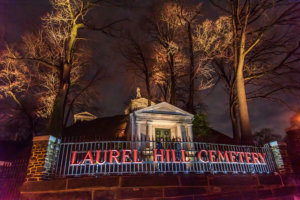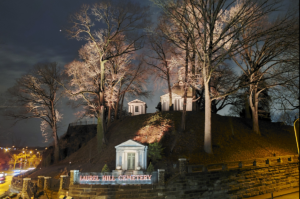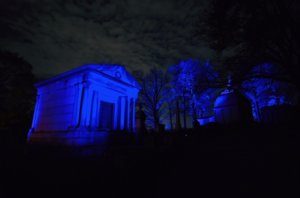Laurel Hill Cemetery‘s recent revitalization was featured in LD+A Magazine’s September issue, highlighting the important history of the site and the purpose of their new landscape master plan. The Lighting Practice designed the three-phase lighting master plan for the 78-acre National Historic Landmark cemetery to create a nighttime identity and engage the surrounding community.
“Laurel Hill Cemetery in Philadelphia reinvents what “resting place” means for both the dead and the living—a theme designers from The Lighting Practice had to keep in mind when crafting a master plan to highlight the historic burial ground’s architecture and landscaping.
Established in 1836 after a Quaker named John Jay Smith had trouble locating his daughter’s designated plot in an overcrowded and unsanitary graveyard, Laurel Hill was his response to the less-than-ideal 19th-century burial conditions. His alternative cemetery, overlooking the Schuylkill River, provided permanent burial for its deceased residents, had no religious affiliation, and offered a picturesque setting for its living neighbors farther away from the city.
“Part of the preservation of the space was the implementation of a lighting scheme which “envisioned the cemetery as a sort of ancient city necropolis high on a hill,” says Caitlin Bucari, lead lighting designer on the project. Master-plan development began in 2018 and the completion of Phase 1 was unveiled in early 2020. The primary goal was to focus on “the exterior views of the cemetery from the surrounding roadways—accentuating unique architectural and established landscape features—in order to renew and enhance the cemetery’s relationship with the city and regional community,” says Bucari…” Read the entire feature on LD+A Magazine’s site >









